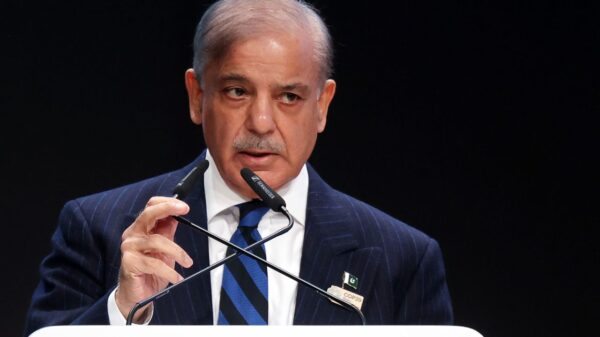Rare Scotch Whisky Market Faces a Decline
The once-thriving market for rare Scotch whisky has seen a significant decline, with total trading volumes dropping by 16%. This shift marks a notable reversal for a market that had previously attracted global investors seeking alternative assets. The decline in the whisky market reflects broader economic challenges and changing investor sentiment.
Average Price per Bottle Sees a Dip
In addition to falling volumes, the average price per bottle of rare Scotch whisky has decreased. Analysts attribute this trend to reduced consumer spending on luxury items and a general tightening of discretionary income amid inflationary pressures. Collectors and investors are becoming more cautious about high-value purchases, impacting the market’s dynamics.
Impact of a Weak Global Economy
The downturn in the rare Scotch whisky market is closely linked to a weaker global economy. Economic slowdowns in key regions, such as Europe and Asia, have dampened demand for collectible spirits. Countries that were previously major buyers of rare whisky are now facing economic uncertainties, reducing their appetite for luxury investments.
Inflationary Pressures Reduce Investor Confidence
Inflationary pressures have also contributed to the decline, making rare Scotch whisky a less attractive investment option. Rising costs of living and financial uncertainties have led investors to prioritize more liquid assets, steering them away from collectibles like rare whisky. This shift reflects a broader trend of risk aversion in the investment community.
Auction Houses Report Reduced Activity
Auction houses specializing in rare Scotch whisky have reported a noticeable slowdown in activity. Fewer high-value bottles are being sold, and previously strong interest from international buyers has waned. This trend highlights the challenges faced by the secondary market, which relies heavily on consistent demand from collectors and investors.
Shift in Consumer Preferences
Consumer preferences are also shifting, with a growing interest in mid-range and premium whisky brands rather than ultra-rare collectibles. Many buyers are opting for products that offer value for money rather than investing in high-priced items. This shift in buying behavior is reshaping the dynamics of the whisky market.
Emerging Markets Fail to Offset Decline
Emerging markets, which were once seen as potential growth drivers for rare Scotch whisky, have not been able to offset the decline. Economic headwinds in these regions, coupled with currency fluctuations, have made it more challenging for new buyers to enter the market. The lack of robust demand from emerging economies further exacerbates the market downturn.
Overproduction of Collectible Bottles
The proliferation of collectible whisky releases by distilleries has also diluted the market. While limited editions were once highly sought after, the increasing number of “rare” releases has led to oversaturation. Investors are now more selective, reducing overall demand for collectible bottles.
Sustainability Concerns Influence Buyer Decisions
Sustainability concerns are becoming a factor in buyer decisions, with some investors questioning the environmental impact of producing and transporting collectible whisky. As consumers become more environmentally conscious, this could further influence the market for rare Scotch whisky.
Speculative Investments Lose Appeal
The decline in rare Scotch whisky volumes and prices reflects a broader cooling of speculative investments. Collectibles, including whisky, had gained popularity as alternative assets in recent years. However, rising economic uncertainties and changing market conditions have made these investments less appealing to risk-averse investors.
Opportunities for Long-Term Collectors
While the market downturn poses challenges, it also presents opportunities for long-term collectors. Reduced prices may allow enthusiasts to acquire rare bottles at more accessible price points. For those willing to hold their investments, the current market conditions could represent a buying opportunity.
Distilleries Adjust Strategies
Scotch whisky distilleries are adapting to the changing market by focusing on innovation and diversification. Many are introducing products aimed at broader consumer bases, including non-collectible premium offerings. This shift reflects a strategic pivot to maintain relevance in a challenging economic environment.
Auction Houses Seek New Strategies
Auction houses are exploring new strategies to revitalize interest in rare Scotch whisky. These include offering curated collections, enhancing marketing efforts, and targeting younger, tech-savvy buyers through digital platforms. Such initiatives aim to reignite demand and attract new participants to the market.
Future Prospects for the Whisky Market
Despite current challenges, experts believe the rare Scotch whisky market retains long-term potential. As economic conditions stabilize, investor confidence may return, driving renewed interest in collectible bottles. Additionally, growing global appreciation for whisky as a cultural and heritage product could support its recovery.
Conclusion: A Market in Transition
The decline in rare Scotch whisky volumes and prices reflects a market in transition, shaped by economic pressures, changing consumer preferences, and shifting investor priorities. While challenges persist, the market’s resilience and adaptability could pave the way for a future recovery. For now, collectors and investors are navigating a landscape that underscores the importance of cautious and strategic decision-making.




































